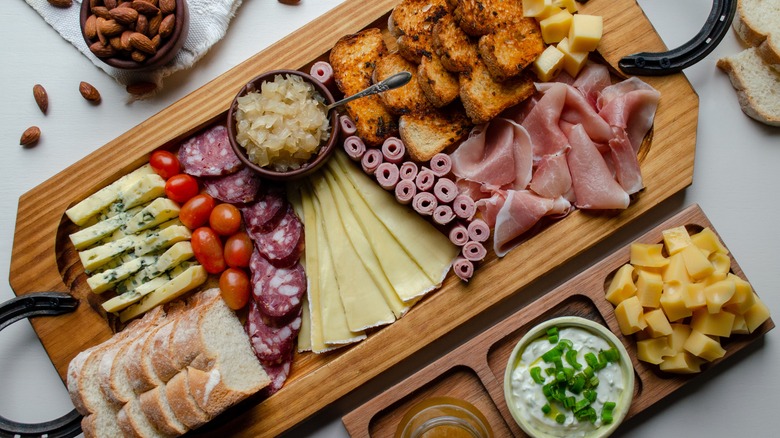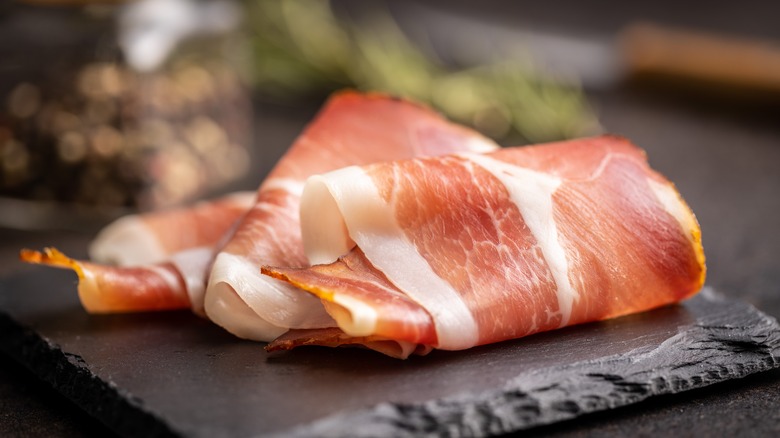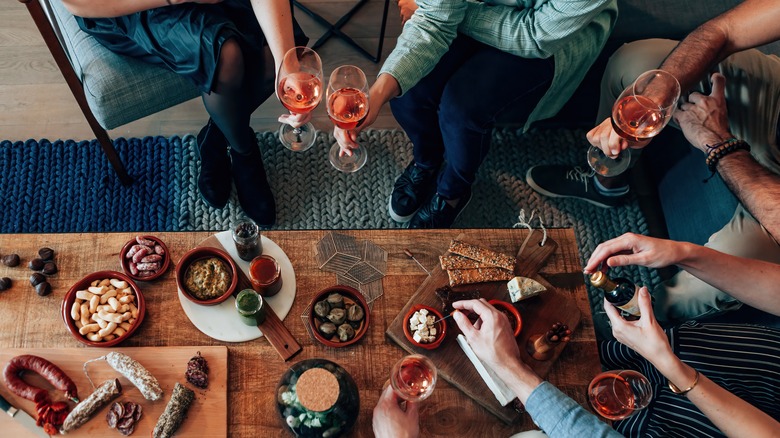Picada: The Argentinian Charcuterie Board You Should Know
It seems charcuterie boards have taken over the culinary world recently, and you may have found artistic, styled boards popping up on your Instagram feed or while flipping through glossy foodie magazines. The trendy food boards are both deliciously functional and an easy aesthetic centerpiece for any get-together. Their customizability is also an added bonus for picky guests or, on the contrary, any neophiles in your life.
The word charcuterie, meaning cured meat, derives from French origin in the 15th century, according to State & Allen. At the time, with no refrigeration, their meats were put through a preservation process that involved curing or dry aging. While the platter has been popular in Europe for quite some time, its popularity has taken off globally, and it can be enjoyed across the world. However, Argentina may have one of the best. Picada is not only a scrumptious array of both delicacies and leftovers, but it is a perfect excuse to catch up with loved ones.
The culture of picada
According to Culture Trip, picada is an experience that is much more about the people than the platter. While delicious, assorted foods can be picked at (the name picada comes from the Spanish verb picar, according to The Cultured Chef, which can mean to nibble or snack), picada is truly a social event that can last hours. If enjoyed at a restaurant, it can be ordered late into the evening, as Argentinians typically eat dinner until 11 pm or midnight.
But it can also look slightly different at Argentinian homes. Culture Trip writes, "At high and middle-class homes, a picada will involve specialty cheeses and sliced meats...A picada for a younger or more alternative set, on the other hand, usually involves an assortment of random snack items, like potato chips, crunchy, sweet-coated peanuts, or bizcochitos." Picada is an experience of customization and is usually accompanied by a bottle of wine or even some beer.
Common food found on picada
Picadas can hold all kinds of snackable foods, usually cheese and meats. The beauty of these boards is there's a little bit of everything. Olives, nuts, and leftovers of any kind can make an appearance on the board if there's a desire for it. But, there are rules of thumb to lightly stick to.
America's Test Kitchen says there are nine essential elements to a picada: cheese, cold cuts, dipping sauces, nuts, brined things (think olives or anything pickled), fruit, canned fish, a bread, and some sweets. For cheeses, they recommend having at least a few with different textures and flavors. For example, adding a soft, creamy brie adjacent to an aged cheese can add variety to your board. The site notes typical cheeses used in Argentina are Reggianito, Mar del Plata, and Fresco. For cold cuts, thinly sliced meats, like prosciutto and salami, are perfect additions and pair nicely with the bread and cheese. More unique elements, like canned fish, often include octopus in Argentina, but your preferences take precedence.
There are no right or wrong ways to spice up your picada boards, as long as they're enjoyable for your palate and exhibit variety.
When you can enjoy some
As Wines of Argentina so elegantly puts it: "For Argentines, a picada is a reason to meet." The array of snackable cheeses and meats can be found in almost any gathering place. Whether it is shared among friends at a bar, a family in their living room, or a neighbor in their garden, it is a good excuse to relax and enjoy someone's company over great food.
It is something that is usually eaten slowly and over a conversation. There is no reason this experience should be rushed. The Cultured Chef writes, "A picada is a social event in Argentina...Generally, friends or family will have a display of picada available for several hours during social occasions for snacking between meals."
So, take this as an excuse to curate your own picada at home and catch up with the loved ones in your life. But remember, there's no rush.



